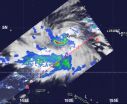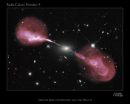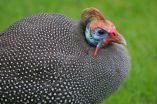(Press-News.org) KANSAS CITY, MO –Chromatin remodeling—the packaging and unpackaging of genomic DNA and its associated proteins—regulates a host of fundamental cellular processes including gene transcription, DNA repair, programmed cell death as well as cell fate. In their latest study, scientists at the Stowers Institute for Medical Research are continuing to unravel the finicky details of how these architectural alterations are controlled.
Through a series of biochemical experiments, Stowers Investigators Ron Conaway, Ph.D., and Joan Conaway, Ph.D., and their team discovered that chromatin remodeling enzyme and suspected oncogene ALC1 (short for Amplified in Liver Cancer 1) is activated through an unusual mechanism: Its shape shifts in the presence of its activators. Their finding identifies a new instrument in cells' molecular repertoire of chromatin-remodeling tools and a potential cancer therapeutic target.
One of the main tasks of chromatin remodeling enzymes, Ron Conaway explains, is "to make DNA accessible so events like repair and gene transcription can occur." Postdoctoral research associate and first author Aaron Gottschalk, Ph.D., previously figured out that ALC1 required protein partners to activate its remodeling function. Publishing in an upcoming issue of the Journal of Biological Chemistry, he dissects the mechanism by which this occurs.
ALC1 and its ilk have a common protein domain, SNF2, that uses the energy of ATP hydrolysis to move nucleosomes—the basic repeating units of chromatin—around, in a process called nucleosome sliding.
"I was intrigued because ALC1 has a unique macrodomain not found on any other SNF2 family member," Gottschalk says. His interest was further piqued when he found that while most ATP-dependent chromatin remodelers function as large multi-protein complexes, ALC1 appeared to work by itself. At the same time, where most of its group-happy family members readily demonstrated nucleosome sliding activity in vitro, ALC1 was not only a lone ranger but also "completely dead on its own."
Gottschalk deduced that ALC1 may function independently, but it needs a boost from a couple of sidekicks: PARP1, an enzyme that responds to several kinds of DNA damage; and NAD+, the substrate by which PARP1 transfers chains of poly (ADP-ribose) onto itself and other target proteins, in a process called PARylation.
Only when PARP1 and NAD+ are on the scene does ALC1 spring into action, altering the accessibility of DNA by shifting nucleosomes around. Gottschalk's earlier findings were published in the Proceedings of the National Academy of Sciences in June 2009.
"We then extended this research," Conaway says, "and the upshot of our recent JBC paper is that ALC1 is likely activated through a series of physical interactions. ALC1's unique macrodomain can bind PAR, and protein-protein interactions also occur between ALC1 and PARP1." Gottschalk and coauthor Rushi Trivedi, a graduate student in the Biochemistry & Molecular Biology department at KU Medical Center, developed a novel footprinting assay that enabled this observation. Rather than merely activating ALC1 and moving on, the researchers found that the trio of PARP1, NAD+ and ALC1 hangs out in a stable complex.
"So PARylated PARP1 and NAD+ are allosteric effectors—by binding to ALC1, they alter its state from dormant to active," Conaway says. "It's an interesting mechanism that's different from how most other chromatin remodelers work. It may also help explain other evidence that PARP1 has the ability to rearrange nucleosomes and reorganize chromatin; this could be one way by which PARP1 exerts its influence."
Apart from its role in modifying chromatin structure, not much is currently known about ALC1. It's regarded as a possible oncogene, being found in excess in hepatocellular carcinoma cells and because overexpression of ALC1 in mice induces spontaneous tumors.
PARP1, on the other hand, has attracted plenty of interest as a potential anticancer drug target, due to its importance in maintaining genomic integrity. For example, in breast cancer cells lacking BRCA1 or BRCA2 function, blocking PARP could effectively remove the cells' last line of defense against DNA-damaging chemotherapy agents. To date, no PARP inhibitor has made it past phase III clinical trials, but pharmaceutical companies continue to chip away at the challenges around optimizing this form of targeted cancer therapy.
"A better understanding of the in-depth biochemistry we're uncovering on ALC1 and PARP1 may, in the long term, ultimately lead to new or more refined therapeutic strategies," Gottschalk says.
Meanwhile, having observed that ALC1 comes to life upon interacting with friends, Gottschalk now wants to understand precisely how this activation happens. With a knockout ALC1 mouse model handy, plans are afoot to extend his studies to an in vivo characterization of a chromatin remodeler that boasts an illustrious family pedigree, yet stands apart in the crowd.
INFORMATION:
Funding for this study came from a National Institute of General Medical Sciences grant (GM41628), and a grant to the Stowers Institute from the Helen Nelson Medical Research Fund at the Greater Kansas City Community Foundation.
About the Stowers Institute for Medical Research
The Stowers Institute for Medical Research is a non-profit, basic biomedical research organization dedicated to improving human health by studying the fundamental processes of life. Jim Stowers, founder of American Century Investments, and his wife, Virginia, opened the Institute in 2000. Since then, the Institute has spent over 900 million dollars in pursuit of its mission.
Currently, the Institute is home to almost 550 researchers and support personnel; over 20 independent research programs; and more than a dozen technology-development and core facilities.
Activating ALC1: With a little help from friends
2012-11-30
ELSE PRESS RELEASES FROM THIS DATE:
Garbage bug may help lower the cost of biofuel
2012-11-30
One reason that biofuels are expensive to make is that the organisms used to ferment the biomass cannot make effective use of hemicellulose, the next most abundant cell wall component after cellulose. They convert only the glucose in the cellulose, thus using less than half of the available plant material.
"Here at the EBI and other places in the biofuel world, people are trying to engineer microbes that can use both," said University of Illinois microbiologist Isaac Cann. "Most of the time what they do is they take genes from different locations and try and stitch all ...
Controversial treatment for autism may do more harm than good, Baylor University researchers find
2012-11-30
ABOUT BAYLOR SCHOOL OF EDUCATION
The Baylor School of Education is accredited by the National Council for Accreditation of Teacher Education and consists of four departments: Curriculum and Instruction (preparation for classroom teachers and specialists); Educational Administration (post-graduate preparation for school leadership); Educational Psychology (undergraduate and graduate programs for those who are interested in learning, development, measurement, and exceptionalities); and Health, Human Performance and Recreation (preparing for sport- and health-related careers, ...
St. Joseph's researchers identify gene involved in lung tumor growth
2012-11-30
(Phoenix, AZ Nov. 27, 2012) – Lung cancer researchers at St. Joseph's Hospital and Medical Center in Phoenix, Ariz., in collaboration with researchers at the Translational Genomics Research Institute and other institutions, have identified a gene that plays a role in the growth and spread of non-small cell lung cancer tumors, opening the door for potential new treatment options.
The study, titled "Elevated Expression of Fn14 in Non-Small Cell Lung Cancer Correlates with Activated EGFR and Promotes Tumor Cell Migration and Invasion," was published in the May 2012 issue ...
Altimeter built at Goddard helped identify ice on Mercury
2012-11-30
VIDEO:
MESSENGER's Mercury Laser Altimeter sends out laser pulses that hit the ground and return to the instrument. The amount of light that returns for each pulse gives the reflectance at...
Click here for more information.
A Goddard-built instrument on NASA's MESSENGER mission provided one of three new lines of evidence that water ice exists near the north pole of Mercury. Most of the ice is covered by a thin layer of material that blankets and protects the ice, but in ...
NASA sees Tropical Storm Bopha moving through Southern Yap state
2012-11-30
VIDEO:
On Nov. 27, 2012, NASA's TRMM satellite revealed that rain in Tropical Storm Bopha was falling at a rate of over 70mm/hour (about 1.75 inches) in the red areas. TRMM...
Click here for more information.
NASA's TRMM and Aqua satellites captured images of Tropical Storm Bopha as it continues to move through Micronesia in the western North Pacific Ocean and trigger warnings and watches throughout.
From its orbit in space, NASA's Tropical Rainfall Measuring Mission ...
Promising drug slows down advance of Parkinson's disease and improves symptoms
2012-11-30
PHILADELPHIA—Treating Parkinson's disease patients with the experimental drug GM1 ganglioside improved symptoms and slowed their progression during a two and a half-year trial, Thomas Jefferson University researchers report in a new study published online November 28 in the Journal of the Neurological Sciences.
Although the precise mechanisms of action of this drug are still unclear, the drug may protect patients' dopamine-producing neurons from dying and at least partially restore their function, thereby increasing levels of dopamine, the key neurochemical missing in ...
Gladstone scientists identify key biological mechanism in multiple sclerosis
2012-11-30
SAN FRANCISCO, CA—November 27, 2012—Scientists at the Gladstone Institutes have defined for the first time a key underlying process implicated in multiple sclerosis (MS)—a disease that causes progressive and irreversible damage to nerve cells in the brain and spinal cord. This discovery offers new hope for the millions who suffer from this debilitating disease for which there is no cure.
Researchers in the laboratory of Gladstone Investigator Katerina Akassoglou, PhD, have identified in animal models precisely how a protein that seeps from the blood into the brain sets ...
A multi-wavelength view of radio galaxy Hercules A
2012-11-30
VIDEO:
Spectacular jets powered by the gravitational energy of a supermassive black hole in the core of the elliptical galaxy Hercules A illustrate the combined imaging power of two of astronomy's...
Click here for more information.
Spectacular jets powered by the gravitational energy of a super massive black hole in the core of the elliptical galaxy Hercules A illustrate the combined imaging power of two of astronomy's cutting-edge tools, the Hubble Space Telescope's ...
Mediation with art therapy can change your brain and lower anxiety
2012-11-30
(PHILADELPHIA) – Cancer and stress go hand-in-hand, and high stress levels can lead to poorer health outcomes in cancer patients. The Jefferson-Myrna Brind Center of Integrative Medicine combined creative art therapy with a Mindfulness-based Stress Reduction (MBSR) program for women with breast cancer and showed changes in brain activity associated with lower stress and anxiety after the eight-week program. Their new study appears in the December issue of the journal Stress and Health.
Daniel Monti, MD, director of the Jefferson-Myrna Brind Center of Integrative Medicine ...
Birds may spread, not halt, fever-bearing ticks
2012-11-30
SALT LAKE CITY, Nov. 30, 2012 – Turkey raises and releases thousands of non-native guineafowl to eat ticks that carry the deadly Crimean-Congo hemorrhagic fever virus. Yet research suggests guineafowl eat few ticks, but carry the parasites on their feathers, possibly spreading the disease they were meant to stop, says a Turkish biologist working at the University of Utah.
"They are introducing a species that is not eating many ticks, based on studies of stomach content, and is carrying the ticks, which are the best conduit for spreading Crimean-Congo hemorrhagic fever," ...







